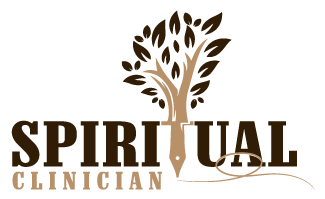Five Elements Eroding
Five essential elements of the Clinical Ministry Movement that may be eroding.

Five essential elements of the Clinical Ministry Movement that may be eroding.
Like all worthwhile movements, the Clinical Ministry Movement (CMM) is an elan, a particularly beautiful energy operating to better humanity in a new and magnificent way. There are some aspects of the CMM that fairly-well define it as just that,iht specific characteristics without which it would not exist. There are some of what seem at this point in the evolution of humanity, to be essential elements of the CMM, a sort of spirituality inherent in it, followed by some ways in which we can be seen as departing from it.
1. Clinical Physicians I know say that the word “clinical” is crucial for us to retain as meaning: “taking an objective perspective on interpersonal care grounded in direct observation rather than only beliefs and theories.” In CPE “clinical” has meant: “taking a close, objective, communal look at the specifics of care conversations to continually improve the quality of care.” The early clinical training groups mostly ignored differences in members’ theological stances to focus rigorously on what was observed to be happening in a given patient and how the inner workings of the chaplain were both engaging and avoiding that. Such remains the heart and soul of the CMM, pacare that is continually improving by open consultation with, and feedback from, colleagues. It has long been known that academia is not enough, nor mere observation of care. One needs to practice.
“The one who learns and learns and doesn’t practice is like the one who plows and plows and never plants.” Plato
2. Pastoral/Ministry What distinguishes the CMM from other forms of clinical care is the assumption that any inclination of a patient to address concerns or questions about Transcendence – what is beyond us all by any name — are readily accepted for conversation. Serious medical or psychiatric situations most always evoke the inherent concerns of what is ultimate reality, especially anything related to what happens after death. Initially the CMM was intended to integrate ministry with the care being provided by the other clinicians attending to patients needing care in inpatient institutions. That still is a major feature of the CMM, which has also expanded to care in churches, businesses, and academic and public educational settings.
3. Care The CMM essentially finds its purpose in care of people in troubled and troubling situations by a religious leader. It is not care rendered by just anybody who drops by a patient’s room, though that may be in many instances far more effective than a pastor’s visit. “Religious” was taken to mean officially related to the established beliefs and practices of one of the five or six major faith groups that have evolved through history and continue to develop and adapt to constantly changing societies. In the current age, the term “spiritual” has become used as more practical, effective, and broader. Things change. Clinging to what used to be but is now evolving, is eventually folly. Discerning however, what is progressing on the one hand, and what is devolving or exceeding its value to humanity on the other, is a function of wisdom, gradual communal reflection, and authentic discernment, and it is most always full of ambiguity. So, focus on the here-and-now of human pain and care, guided by the caregiver’s own best communally examined convictions.
“At bottom and just in the most important things, we are utterly alone, and for one person to be able to advise or even to help another, a lot must happen, a lot must go well, a whole constellation of things must come right in order once to succeed.” Rilke
4. Eductive Eductive–from Educe: to draw out something hidden, latent, or reserved.
The CMM has always featured a “listen first” approach, a dedicated attention to the inner processes of the other person, with a quiet monitoring of one’s own inner processes to keep the interaction optimally objective yet easily inter-subjective. Dedicated personal listening is, in itself, care. It is distinct from diagnostic listening, romantic listening, social listening, and colleague listening. With patients we listen first, before directing the flow of conversation to our own agenda — until we have a grasp on what might be helpful to this person’s human spirit., now. We work to create an atmosphere of open disclosure and ease of expression, characterized by non-anxious presence and highly non-judgmental stances. At the same time, caring confrontation has been a feature of pastoral care for centuries and continues to be necessary for many care situations to take a deeper level of professional intimacy. And accurate verbal description, adopted from existentialism, has always been a feature of CMM care and education, especially in chart notes, student final evaluations, and in here-and-now verbal group feedback.
“The effort really to see and really to represent is no small business in face of the constant force that makes for muddlement.” Henry James
5. Small Group Affective Education The engagement into clinical spiritual care is not natural to many, if any individuals who become interested in it. Preparing for professional chaplaincy requires stark peer feedback in a small, well supervised group setting like those in which it was initiated in the Mid-1920s. Integrating one’s emotional substrate with one’s developed and immediate thinking to follow the pain of one troubled person remains a challenge re-energized by every new patient. The mastery of practice of the quality supervision needed to orchestrate that group learning takes years of practice and requires changes in one’s personality. There is no short cut to that training that has yet been found, including claims of “evidence based” programs that have not been observed clearly and extensively by experienced practitioners. Belief in such programs stands in danger of growing as one of the heresies described on the webpage–Five Heresies.